How To Turn Off Texting On Iphone While Traveling
(Last Updated On: September 16, 2021)
This complete guide to using your iPhone* overseas includes comprehensive details, such that even the least tech-savvy people will be able to use their smartphones abroad by following the instructions below.
Updated June 2018. This post contains affiliate links.
In this guide, we'll go over:
1. How to use Airplane mode and Wi-Fi
2. How iMessage and FaceTime work overseas
3. Best apps for texting overseas
4. Using international SIM cards with your American iPhone
5. Locked vs unlocked phones
6. Must-have travel accessories for your iPhone
7. Freezing your existing cell phone plan
8. Adding international service to your existing cell phone plan
9. Keeping your US phone number even if you cancel your service
10. Overview of the best cell phone plans for travelers
11. Dumbphones: Buying a cheap international cell phone
12. International Hotspot: Global Wi-Fi Device
*Android users, while your exact Settings instructions will vary a bit from the iPhone's Settings instructions detailed in this post, the ideas are exactly the same.
Read it, save it, pin it, share it. Help me help you and your friends to be smart with your cell phone bill when you travel.
First, what type of traveler are you?
If you have no idea what you should be doing with your iPhone abroad, start here to identify which parts of this guide apply directly to you.
A – Short-Term Traveler: You're going on a one-time short trip (less than a month) and you want Wi-Fi capability to keep in touch with family and friends or check Facebook, email, post to Instagram, etc., but you don't necessarily need an international SIM card or international data. Pay attention to sections 1, 2, 3, 6.
B – Relocator: You're going abroad for at least a month to one location or region and would like an international SIM card to have all the regular calling and data capabilities of your smartphone abroad. Examples: Study abroad students, working or volunteering abroad, moving abroad. Pay attention to sections 2, 3, 4, 5, 6, 8, 9.
C – Convenience Traveler: Trip length doesn't matter so much to you, you just want to be able to add international service to your already existing plan, so that you can easily use it in multiple places without having to think twice. Pay attention to sections 3, 6, 7, 10.
D – Nomad: You're peacing out without a long-term plan, you need all the data in all the countries. You're hoping to not switch SIM cards all that often, or at all if possible. Pay attention to sections 3, 4, 5, 6, 8, 9, 10.
1. Using Airplane Mode and Wi-Fi (aka what you need to turn off on your iPhone when you're abroad)
This section will help you completely avoid international charges on your iPhone bill. Why is this important? If you don't freeze your account (Section 8) and your phone happens to pick up service in foreign countries, you might be tempted to use apps or answer calls, and that will skyrocket your bill. SKY. ROCKET. Your bill. International charges will be applied to your account, and the sight will not be pretty.
Avoid international charges, yet still enjoy the apps on your phone by connecting to Wi-Fi.
You don't need to do anything special to your phone before you go abroad. After you arrive in your destination country:
How to Turn on Airplane Mode and Use Wi-Fi at the Same Time (Yes, you can).
Swipe up from the home screen to access your control center:
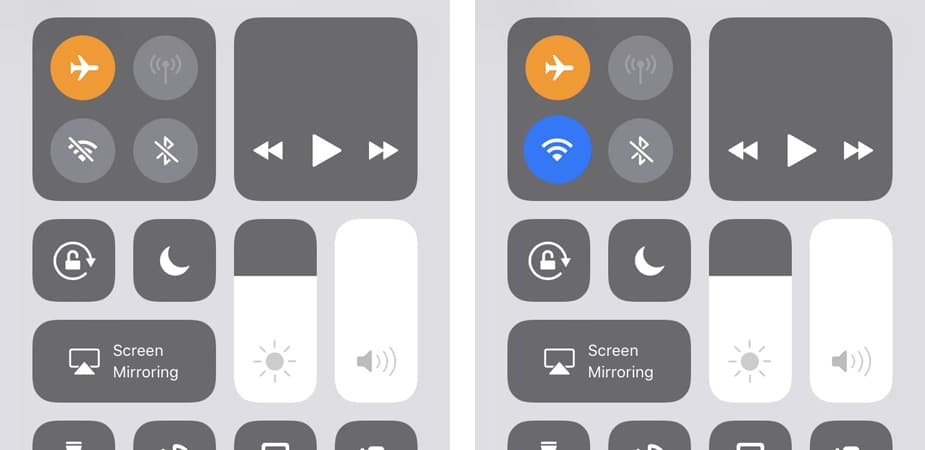
As long as Airplane Mode is ON, you won't be charged for data. To double triple make sure you won't be charged for data, do this:
- Settings –> Cellular –> turn Cellular Data OFF
Any apps that function on Wi-Fi (Facebook, Instagram, Twitter, Mail, Voxer, etc.) are accessible as long as you are connected to Wi-Fi. Go to town.
Turning off Airplane Mode and Cellular Data essentially turns off your phone number and the data you normally pay for. This means you cannot receive or place regular phone calls or SMS messages (iMessage excluded, see next section). Also, you can't access anything that needs Wi-Fi to function if you're not connected to a Wi-Fi signal.
No Control Center? Using Airplane Mode and Wi-Fi for Dummies:
Step 1: In your Settings, turn Airplane Mode ON (make sure the little airplane icon is highlighted). This ensures you will not use any data or incur any unexpected international charges.
Step 2: In your Settings, select Wi-Fi, and turn your Wi-Fi ON. Airplane Mode automatically turns Wi-Fi OFF, so you will want to go in and turn it back ON. Your only chance to use your phone's Wi-Fi-capable apps and functions will be when you are connected to Wi-Fi. If you aren't picking up any free signals, you'll want to head to a coffee shop or your hotel to find one.
Step 3: To connect to a Wi-Fi signal, go into your Settings, select Wi-Fi, and select a network. If your hotel or a restaurant provides Wi-Fi that takes a password, you'll need to get the password from them, then select that network and type in the password to connect.
2. Using iMessage and FaceTime Overseas (for free)
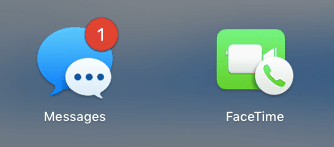
Sorry Droids, this is for iPhones only.
Connect your iPhone to Wi-Fi, with iMessage and FaceTime turned ON and activated:
- Settings —> Messages —> make sure iMessage is ON
- Settings —> FaceTime —> make sure FaceTime is ON
- If you have been switching SIMs and phone numbers around recently and iMessage isn't activating on your iPhone, restart your phone and try again.
iMessage and FaceTime work through your Apple ID if they can't use your affiliated phone number. Meaning, in your Settings —> Messages —> Send & Receive, you will see all options you have to reach people through iMessage, and you can use your email address when your phone number is frozen or unavailable (i.e. perhaps you switched out your SIM). Your friends at home might see an email address instead of your phone number when you send a text, but it still works.
As long as Airplane Mode is ON, or if your Cellular Data is OFF, you won't be charged for using these services. If Airplane Mode is not on, and your Cellular Data is turned on, FaceTime will charge as Data, so be careful.
Using iMessage and FaceTime for Dummies:
FaceTime: A nice way to chat with family and friends back home as long as they have iPhones and are awake at the same time as you! (Mind the time zone!) Open your Contacts, select the person you want to FaceTime, and hit the video icon in your options. Alternatively, open your FaceTime app (looks like the green one above), on the top select Audio or Video, then type the name of the person you'd like to chat with, they should show up in a list, tap their name to place the call. If they don't have an iPhone, it won't work.
iMessage: Yes, iMessage functions on Wi-Fi (between iPhones only), so you can text all you want with others who also have iPhones and iMessage, even overseas! You don't have to do anything special to make iMessage work (it should already be turned on in your Settings), your phone already knows what to do. Simply text anyone else with an iPhone. If you aren't sure who has one, you can look back in your texts. Anyone that you text with blue text bubbles has an iPhone, anyone with green text bubbles does not.
3. Best Apps for International Texting and Calling (for free)
All of the following listed app functions are free on Wi-Fi. Please note that it is necessary for each user to communicate through the same app (i.e. you can't send a WhatsApp message or place a call to someone who doesn't have WhatsApp).
WhatsApp: Most popular app outside the US for texting and phone calls. Download it and activate your phone number with it. Even if you freeze your phone number or switch out the SIM, you can still opt to continue using WhatsApp with the original number that you connect to it. The only time this won't work is if you give up your number and someone else starts using it. (Avoid that with Tossable Digits, read more about saving your phone number while you travel here). Functions: texting, sending images and videos, voice messages, video calls, audio calls.
iMessage: Refer to the previous section. Functions: texting, sending images and videos. (iPhone to iPhone only).
FaceTime: Refer to the previous section. Functions: audio and video calls. (iPhone to iPhone only).
Facebook Messenger: Messenger has come a long way. Functions: texting, sending images and videos, and placing voice and video calls.
Voxer: One of my favorite apps for keeping in touch with my best friends and family. It's like a walkie-talkie app. Functions: texting, sending images and videos, voice messages up to 15 minutes long.
4. Using an International SIM Card with an American iPhone (aka how to get a foreign phone number with data)
SIM cards for Dummies: A SIM card is essentially your cell phone number and whatever data you pay for, while the actual phone is just the machine that makes it all work. This means you can take out your SIM and insert it in another (unlocked) phone and make a phone call, and the person you are calling still sees your name on the caller ID. It also means you could take out your SIM, and still use your same phone with Wi-Fi to access any apps, you just wouldn't have your phone number or any data connected anymore. Taking out your SIM essentially does the same thing as turning on Airplane Mode or turning off Cellular Data: your phone just becomes a Wi-Fi device.
So, getting a foreign SIM means getting a foreign phone number and data. This is ideal for people moving to one place overseas for longer than a month.
Before you do anything else (like leave the country), make sure:
- Your phone has a SIM card slot. See the photo below if you don't know what this looks like.
- Your phone is unlocked. See next section for more about unlocked v locked.
Having an unlocked phone is important if you want to be able to use your own phone once you get abroad. If your phone is locked, you will have to buy a local phone rather than use your own. Unlocking your phone gives you the ability to use an international SIM card. As long as you have an unlocked phone with a SIM card slot, you should be able to purchase a SIM overseas (with data, calling, texting, whatever you need), or pre-order a SIM card. Then slip it into your phone, and have a fully-functioning local phone.
After you arrive in your destination country:
Step 1: Purchase a SIM card. There are three different sizes of SIM cards: regular, micro, and nano. Newer iPhones use nano-SIM cards, but most SIM cards for sale will come in a "one size fits all" fashion, with perforations in the plastic such that you can punch out the size you need to fit in your phone's SIM card slot. Be sure to check before you buy.
Getting one might be as easy as purchasing one from a vending machine like the one in the photo below from London Heathrow Airport (I've never done this!). In most cases, however, you will need to locate a store where they are available for purchase (I've done this a ton of times).
SIM cards are cheap. You can get a SIM with a decent amount of data and calling for under $20 just about everywhere, then you just "top up" when your data gets low. You may want to do a bit of research for the best carriers in your destination country before you choose one.
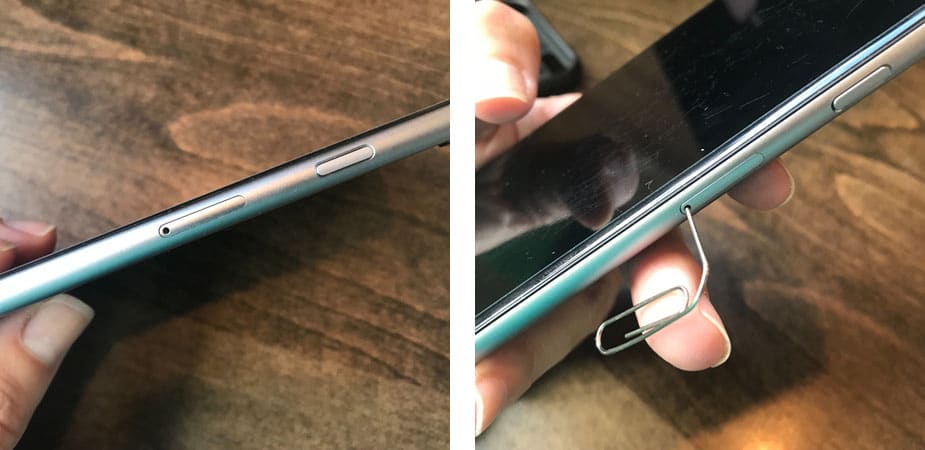
When purchasing an international SIM card, keep in mind:
- If you purchase it from a cellular carrier, you may be required to show your passport (bring it with you).
- Some SIM carriers have better coverage or offer better pricing than others. If you have a chance, ask around to see which carrier the locals prefer before you commit.
- Some SIM carriers might simply be a better option because they exist in more than one country. For example in Italy, you could go with an Italian SIM carrier (i.e. Tim), or a general European one (i.e. Vodafone) that will recharge your data or minutes in more countries than just Italy. This is a good thing to keep in mind if you'll be traveling through multiple countries.
- Make sure it is the right size and will work for your phone, whatever phone you decided to buy it for.
Step 2: Purchase any extra credits or data that might not have come included on your SIM card. These will be available in the same store that you buy your SIM card, and many convenience stores also sell them. They come in the form of cards with scratch-off codes, or it may be an automated system that the store clerk can do for you. Your SIM card provides your phone number, while credits and data provide your service. It is pay-as-you-go with SIM cards, so once you use up your credit, you will need to buy more. Don't worry, you will still have all your apps on your phone, switching out the SIM is simply switching out the phone number.
Step 3: Insert the SIM card into your phone. For iPhones, make sure your phone is off, take off any case you might have, and find the tiny slot on the side with a little hole in it. Use a paper clip to push into the hole (push hard), and that little tray will slide out, where you can remove your SIM card associated with your account in the States (be very careful not to lose this!) and replace it with your new international SIM card. Turn your phone back on to set up your new SIM.
Step 4: Add any credits/data that you purchased. If you're using a card with a scratch-off code, just follow the instructions on the card. Usually, you dial a number, and a recording tells you what to do, entering your scratch-off code to activate your credit. Be careful if you are in a country that speaks another language, perhaps ask someone else to help you load your credits to make sure nothing gets lost in translation.
Once you have activated your credit, you should be good to go! You will have a local phone number, and you should be able to use everything on your phone just as you would in the States.
Buy an International SIM Card Online
If you want to pre-order an international SIM card and have it topped up and ready to go for immediate use, try one from World SIM.
It comes with a UK number and a US number on one SIM, and you can add virtual numbers.
It's a bit more expensive than an international plan like T-Mobile or Sprint, and also more expensive than a local SIM, but it is super convenient, and you can top up online.
You can get a Europe SIM card easily. Check out bundles and plans for World SIM here.

5. Locked v Unlocked Phones (aka how a US iPhone works overseas)
When a phone is "locked," it essentially means it will only operate with the carrier through which you have a contract. Carriers do this so you won't jump ship and start using another carrier. If you bought it through a specific carrier (i.e. at a Verizon store, chances are it came locked).
However, US cell phone carriers will unlock your iPhone for international use if you just ask them. "Unlocking" is a software issue, not hardware, so your carrier can unlock your phone remotely. This will enable your iPhone to be compatible with SIM carriers in other countries. This basically means you could go abroad, purchase an international SIM card, put it in your iPhone, and use your iPhone abroad with that carrier as explained in the previous section.
It sounds simple, and sometimes it is, but it requires action on your part, and it's different for every carrier. Click here to find out how to unlock your iPhone with your carrier and use it overseas.
6. Must-Have Travel Accessories for Your iPhone
1. Pop Socket
One of the top five questions I get asked, anywhere: "WHAT is that THING on your phone???"
That "thing" is the cheapest insurance policy I've ever bought. That "thing" is a pop socket. Since I bought it, I haven't dropped my phone while taking photos, texting, or other. It acts as an extra grip on the slippery iPhone, plus it provides leverage so that I can reach the entire screen with one hand (iPhones are getting so big these days). It also acts as a stand so I can prop up the phone to watch videos, and it really helps if I'm lying in bed and holding my phone above my face, I don't drop it on myself. I got it brand new with the case I mention here in #2, stuck it on in March of 2017, and it has not budged at all.
I'm not convinced there is much else out there that is more worth your next $10. I am completely unaffiliated with them and completely in love with their product.
Expert tip: Do NOT purchase a generic version, the stickiness is not guaranteed to be strong. Saving a couple of bucks is not worth losing your iPhone that cost several hundred dollars if the sticky part gives. Stick with Pop Socket 😉

2. Hidden credit card iPhone case
I'm not a purse girl. I love having my ID and credit card ready with my phone; however, I DON'T like it when everyone else can SEE my credit card just hanging out on the back of my phone. Especially if I pass my phone to someone to snap a photo of me. Look at that photo above one more time. You'd never know there is a hidden credit card slot:
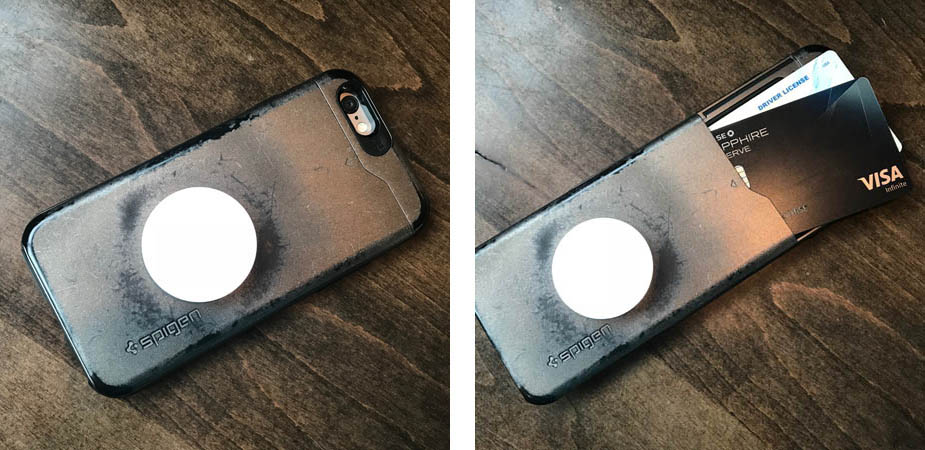
This brilliant little baby is by Spigen, and I swear by it for my iPhone 6.* It is a little worn, but I used it from March of 2017 through December 2018 without breaking, nor did my phone get any dropping damage whatsoever with this case on (I rarely drop it because of the grip of my Pop Socket). For the ultimate credit card phone case stealth mode, I highly recommend it.
*Update 2019: I upgraded to an iPhone XR, and the correlating Spigen case for the XR is NOT quality (don't waste your time or money). Instead, I've discovered this credit card iPhone XR case, combined with a black pop socket, and tempered glass screen protector.
3. Waterproof case
This is a simple waterproof phone case by Joto, sort of like a dry bag for your phone for those of us who don't have Lifeproof cases. It has smart material so you can operate the screen through the plastic. For $8, another great insurance policy for the active traveler.
4. Anker charger
I can't get through any packing list or iPhone post without mentioning my absolute favorite mobile USB charger. No matter which one you get, go with Anker, they are a great brand and make powerful batteries. I've had mine since the summer of 2015 and it still charges my phone up to 7 times on one charge. I never leave home without it.
7. Freezing Your Existing Cell Phone Plan (aka how to not pay money for services you aren't using)
If you are leaving for at least a month and not going to be needing your US cellular service at all during that time, I suggest that you put your service on hold. You should be able to do this online or by calling your carrier's customer service. For Verizon, you can do this online in your MyVerizon account. In my experience in the past, if you call customer service and ask them to do it, they charge a $15 fee, so be smart about how you do it.
On one trip to Mexico in 2014, I waited until I arrived, then I did it online and it took effect immediately. Upon arrival back to the States, you can go back online and have them reactivate your service immediately as well. Even if your carrier charges a small fee to keep your line "alive" while it hibernates, it could still save you a significant amount of money that would otherwise be wasted.
Note: You will not be able to receive regular SMS texts or phone calls while your service is on hold. Your phone becomes a Wi-Fi device without an active SIM card.
Because I switched to T-Mobile, I do not have to do this anymore. This is for people who want to keep everything about your regular account the same, but you'll be leaving for long enough to put it on hold for a bit. The other option would be using Tossable Digits to keep or save your number while traveling, but cancel your plan completely for now (see section 9).
8. Adding International Service to Your Existing Cell Phone Plan
This part is a little tricky for me to write about because there are many different cellular carriers within the US, and each carrier's services and rates are going to vary, not to mention the fact that they seem to be constantly changing.
I wrote a post comparing cell phone plans for travelers, check that out to see what your carrier/plan includes.
Verizon International Service
Verizon has an option to activate a Travel Pass for $5/day in Mexico and Canada and $10/day in over 130 countries worldwide. For short-term trips, this can be a great option. For long-term trips, $10/day = roughly $300/month. Please don't be that dummy.
Also, remember to activate your Travel Pass BEFORE you travel, otherwise, you're screwed.
See more about Verizon's international travel solutions here.
AT&T International Service
AT&T has the same idea as Verizon, but they call it International Day Pass and it starts at $10/day. Some of AT&T's existing plans already cover talk and text in Mexico and Canada, so be sure to know what you're already paying for before you purchase coverage.
See more about AT&T's international travel solutions here.
T-Mobile & Sprint International Service
T-Mobile is leading the movement that has made this girl ONE HAPPY TRAVELER. The T-Mobile ONE plan gets you unlimited (2G) data in more than 140 countries worldwide. Sprint is catching on and implementing similar plans.
All you have to do to use it is overseas is make sure your roaming is turned ON:
- Settings —> Cellular —> Cellular Data (ON) and Cellular Data Options (Roaming ON)
While you're in Settings, turn on your FREE Wi-Fi calling:
- Settings —> Phone —> Wi-Fi Calling ON
Times have changed. Even Montana has T-Mobile now, which was my biggest problem with the carrier until 2018.
Read more about the best cell phone plans for travelers.
9. How to Keep Your US Cell Phone Number When You Travel
Guess what! You don't have to say goodbye to your precious cell phone number that you've had for years just because you're going abroad for a while. You can cancel your existing, expensive cell phone plan AND keep your number, even having calls and texts forwarded in the meantime, and reactivating it with a new service at home upon your return.
How? Use Tossable Digits. You essentially turn your existing number into a virtual number by porting it to Tossable Digits (don't do this until you're abroad and ready to cancel your existing cell phone plan).
You only pay for the forwarded texts and calls that you use, and you can cancel any time. Lots of people have found this to be a massively helpful solution when it comes to phone numbers and travel.
Check out everything you need to know to save your phone number while you travel.
10. Overview of the Best Cell Phone Plans for Travelers
I have a whole post dedicated to comparing cell phone plans for travelers, but here is a quick summary:
T-Mobile: Best for the frequent traveler or nomad who skips around a lot but still has a home base in the US.
Sprint: Same offering as T-Mobile, not great coverage in the US.
Verizon: Best coverage in the US, has a Travel Pass for short trips, so it is still a great option for frequent but short-term travelers. Not ideal for any long-term travel.
AT&T: Same idea as Verizon.
Project Fi: Consider Project Fi if the Wi-Fi aspect makes sense in your area (and you're willing to give up your precious iPhone), or stick to what you have.
Click here to read the full post.
11. Dumbphones: Buying a Cheap International Cell Phone
A "dumbphone" is what I call the opposite of a smartphone. It still has a flip screen, qwerty keyboard, or… just buttons. Remember those? You won't be able to use your dumbphone abroad unless it is SIM card-compatible, and even then some countries are strict about what phones will work with their networks. Check behind the battery to see if there is a SIM card in there.
Most dumbphones in the US are not SIM-compatible but don't worry, because your destination country is bound to have many international cell phones for you to choose from for cheap. The phones will already be SIM-capable and some might even come packaged with a SIM card and credits included. This means that you do not need to have a smartphone overseas, you can still have a regular phone, but the ones overseas will be SIM-capable, and that is the key to using it abroad.
You will simply need to purchase a new phone, and in most cases, this won't cost you much. I have paid as little as $10 (Brazil) and as much as $65 (Italy) for a phone abroad.
Refer to Sections 4 and 5 above for help with using SIM cards in dumbphones.
12. International Hotspot: Global Wi-Fi Device
An international hotspot is a portable device that connects to local data and produces a private Wi-Fi signal just for the owner of the device to use (and share with friends or family). You do not need a SIM card for it, but it will only work where there is cell service. For example, in Germany it might connect to Telekom, in the US it might connect to AT&T, etc., but if there is no cell service for it to connect to, it won't magically provide a Wi-Fi signal.
With a portable global Wi-Fi device, you don't need to buy SIM cards or find public Wi-Fi for your phone, you can simply turn on your device, connect to its signal with your phone and laptop, and you are charged for every 24 hours that you use.
I don't consider this a better option than SIM cards if you're going on a long-term trip, because the charges will add up quickly. But if you're traveling somewhere for a short time that has good connectivity (i.e. don't bring this to Patagonia and expect a signal), this would be a good option if you need to stay connected, especially if you'll be using the Internet on your laptop.
Here are a couple of options to get started with international Wi-Fi devices:
- Skyroam: Skyroam's device is called Solis. It works as a portable 4G LTE Global Wi-Fi device AND a power charger at the same time. It costs about $9/day. Use promo code BMTWIFI to receive a discount!
- Tep Wireless: Tep's device is called Teppy, and you can rent it for a trip and return it by mail. It costs about $9/day.
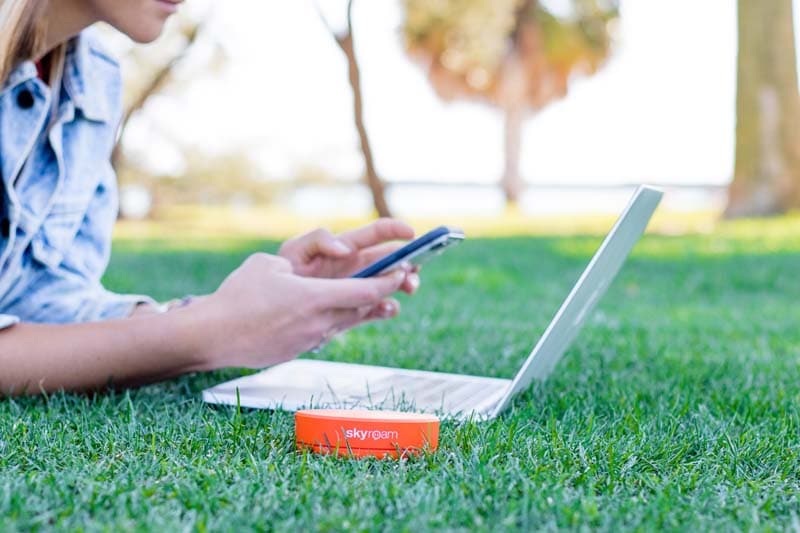
Conclusions
This post was originally published in 2014, updated in 2018. Tell me, have I forgotten anything?
To read more about using your iPhone abroad, check these out:
- How to Unlock Your iPhone and Use and International SIM Card
- Using Your iPhone Abroad with Wi-Fi and Airplane Mode
- How to Set Up a Telcel SIM Card in Mexico
- Portable iPhone Charger: Anker Review
- Best Road Trip Apps For Your Next Adventure
- Comparing Cell Phone Plans For Travelers
- Global SIM Card Magic: I Switched to T-Mobile and I'm Not Looking Back
Also, now it's your turn! I would love to hear about your experience taking your phones abroad. It helps others reading the comments if YOU share successes and failures with phones abroad. What did you do right? Is there something you wish you knew before you left? Can you add anything else to the information here? Please share in the comments!
Like this post? Pin it! | Follow my travels on Instagram
- Tags airplane mode, international cell phone plans, international phone number, international sim card, iphone, iPhone apps, study abroad, t-mobile, unlocking iPhone, wifi abroad
How To Turn Off Texting On Iphone While Traveling
Source: https://thebudgetmindedtraveler.com/iphone-abroad/
Posted by: vanmetersamintme.blogspot.com






0 Response to "How To Turn Off Texting On Iphone While Traveling"
Post a Comment